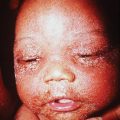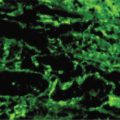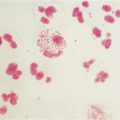CASE 27
Arnold, a 28-year-old man, recently returned from a camping trip in Massachusetts and has noticed several large, itchy, erythematous (red) patches (that seem to “move around”) on his arms. He remembers being bitten by some “bugs” while camping, but otherwise there is no significant medical history of note and no drug history. You recall reading about Lyme disease while you were at medical school and order a serum test for antibodies to Borrelia burgdorferi. The test comes back positive, confirming your suspicions (and the recognition of a classic “erythema migrans” picture).
QUESTIONS FOR GROUP DISCUSSION
2. Describe the tests used to diagnose infection with B. burgdorferi. What is the confirmation test in North America?
3. Review the inflammatory process (see Case 23). What evidence is there that B. burgdorferi synovitis is the result of antigen-driven activation?
6. Explain dominant antigenic epitope and how this could account for the fact that resident Lyme disease is rare in Europe.









